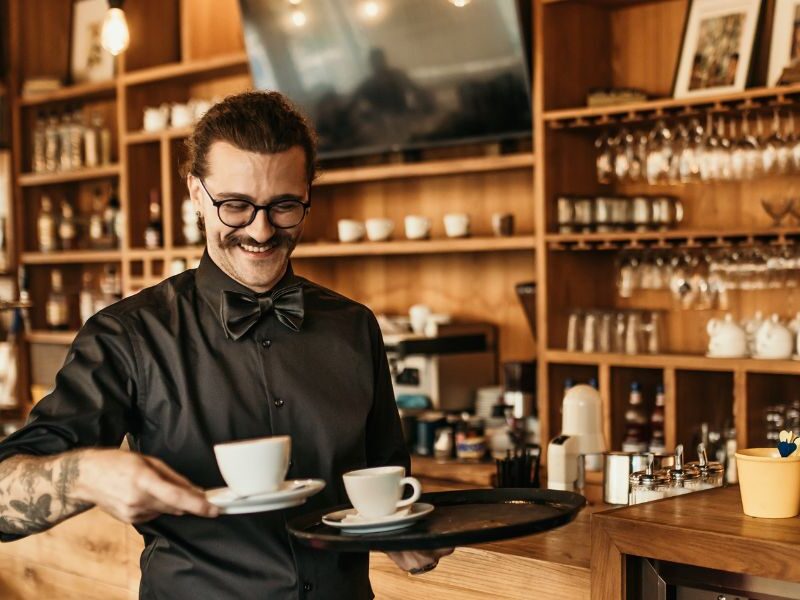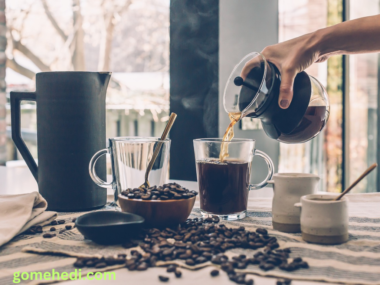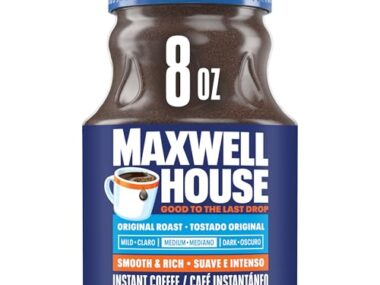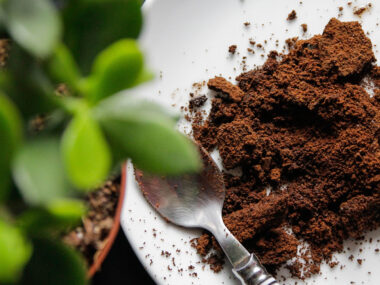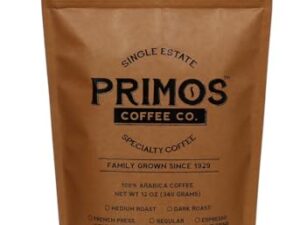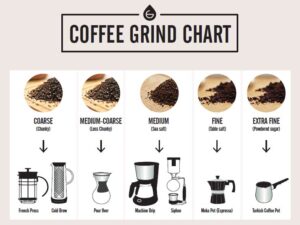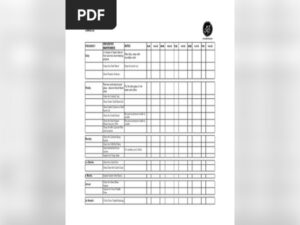The best coffee for espresso is medium to dark roast. It offers rich flavor and perfect crema.
Coffee lovers know espresso is more than a drink. It’s an experience. The choice of coffee beans shapes this experience. Espresso demands a specific type of coffee to unlock its full potential. The depth of flavor, aroma, and texture all depend on the right beans.
Selecting the right coffee ensures an espresso shot with perfect balance and intensity. From Arabica to Robusta, beans come in various types and roast levels. Each brings unique characteristics to your cup. Understanding these differences helps you brew the ideal espresso. It’s a journey into taste, where every sip tells a story. Ready to explore the world of espresso coffee? Let’s dive in!
Espresso Basics
Espresso is a popular coffee choice for many people around the world. It’s known for its rich flavor and strong aroma. But not all coffee is suitable for making espresso. Choosing the right type of coffee can enhance the taste and quality of your espresso. Understanding the basics of espresso is important. This includes knowing what espresso is and how it’s made. These insights will help you select the best coffee for your espresso needs.
What Is Espresso?
Espresso is a concentrated form of coffee. It’s brewed by forcing hot water through finely-ground coffee beans. This process extracts the coffee’s full flavor and aroma. Espresso is different from regular coffee. It has a thicker consistency and a stronger taste. Espresso is served in small amounts. Typically, it’s about one ounce per shot.
Key characteristics of espresso include:
-
Rich flavor: Espresso has a bold and intense taste.
-
Strong aroma: The scent of espresso is powerful and inviting.
-
Thick consistency: Espresso has a creamy texture.
-
Small serving size: Usually one ounce or less per shot.
Popular uses of espresso include making coffee drinks like cappuccinos and lattes. It’s a favorite among coffee enthusiasts for its robust flavor. Choosing the right coffee beans is crucial for making quality espresso. Certain beans enhance the taste, while others may not be suitable.
How Espresso Is Made
Making espresso involves a special brewing method. It’s different from regular coffee-making processes. The first step is to finely grind the coffee beans. The grind size is important. It affects the extraction and flavor.
Next, the ground coffee is packed into a portafilter. This is done using a tamper. The coffee must be evenly packed to ensure proper extraction. Once the coffee is ready, hot water is forced through it. This is done using an espresso machine. The water temperature is usually around 190 to 200 degrees Fahrenheit. The pressure is about 9 bars.
The brewing process takes about 25 to 30 seconds. Proper timing is crucial. It ensures the espresso is not over-extracted or under-extracted. The final product is a thick, aromatic shot of espresso. The espresso should have a layer of crema on top. This is a sign of a well-made espresso.
Factors affecting espresso quality:
|
Factor |
Impact |
|---|---|
|
Bean type |
Influences flavor and aroma |
|
Grind size |
Affects extraction process |
|
Water temperature |
Impacts taste and consistency |
|
Brewing time |
Ensures proper extraction |
Understanding these factors helps in making the best espresso. Choosing the right coffee is part of the process. Ensuring the best brewing conditions will enhance the espresso experience.
Coffee Bean Varieties
Espresso is a beloved coffee style known for its rich flavor and creamy texture. Choosing the right coffee bean is essential for crafting the perfect espresso. Coffee Bean Varieties play a significant role in determining the taste and quality of your espresso. Different types of coffee beans offer unique flavors and characteristics. Understanding these differences can help you select the best beans for your needs.
Arabica Vs. Robusta
Arabica and Robusta are the two main types of coffee beans. Arabica beans are known for their smooth, aromatic flavor. They typically have a higher acidity and offer a wide range of taste profiles. Robusta beans are more bitter and robust. They contain more caffeine and have a stronger, earthier taste.
Here are some key differences between Arabica and Robusta:
-
Arabica: Sweet, fruity notes, less caffeine.
-
Robusta: Strong, harsh flavors, more caffeine.
Arabica beans are often preferred for espresso due to their delicate flavors and pleasant aroma. However, some espresso blends use Robusta to enhance the crema and boost caffeine levels. It’s important to consider your taste preference when choosing between these two beans.
Single Origin Vs. Blends
Single Origin coffee refers to beans sourced from a specific region or farm. These beans offer distinctive flavor profiles unique to their origin. Coffee enthusiasts appreciate single origin for its purity and complexity. Blends, on the other hand, combine beans from various locations. This creates a balanced flavor and often results in a consistent taste.
Here’s a comparison of Single Origin and Blends:
|
Single Origin |
Blends |
|---|---|
|
Unique flavors, specific to one region. |
Balanced flavors, from multiple regions. |
|
Best for exploring distinct tastes. |
Ideal for consistent espresso experience. |
Many coffee lovers enjoy Single Origin for its unique flavors and authentic taste. Blends are popular for smooth and reliable espresso shots. Choosing between Single Origin and Blends depends on your personal taste preferences and desired espresso experience.
Roast Levels
Espresso is a favorite choice for coffee lovers. Choosing the right coffee type is crucial for a perfect espresso. Roast level plays a key role in the taste and aroma of your espresso. There are mainly two types of roast levels: light and dark. Each offers a unique flavor profile. Understanding these characteristics helps in selecting the ideal coffee for espresso.
Light Roast Characteristics
Light roast coffee is known for its bright and lively flavors. These roasts often preserve the natural taste of the coffee beans. This makes them a favorite for those who enjoy a fruity or floral note. Light roasts are roasted for a shorter time. This keeps the internal temperature lower and maintains the bean’s unique flavor.
Some key characteristics of light roast include:
-
Acidity: Higher acidity compared to darker roasts.
-
Flavor: Fruity, floral, and sometimes sweet notes.
-
Body: Lighter body with a crisp finish.
-
Color: Pale brown with no oil on the surface.
Light roast might not be the first choice for traditional espresso lovers. It offers a unique taste experience, though. Its vibrant flavors can create an interesting espresso shot. This roast is best for those who enjoy experimenting with new flavors.
Dark Roast Characteristics
Dark roast coffee is famous for its bold and robust flavors. It is often the preferred choice for a classic espresso. These beans are roasted for a longer time at higher temperatures. This results in a rich and intense flavor profile.
Some key characteristics of dark roast include:
-
Acidity: Lower acidity compared to light roasts.
-
Flavor: Chocolatey, nutty, and sometimes smoky notes.
-
Body: Full-bodied with a creamy mouthfeel.
-
Color: Dark brown to black with an oily surface.
Dark roast is often used for traditional espresso drinks. Its full-bodied taste and lower acidity create a smooth espresso shot. Perfect for those who prefer a classic coffee experience. Dark roast coffee beans are ideal for bold and intense espresso lovers.

Credit: m.youtube.com
Grind Size Importance
Espresso is a unique coffee experience. It is rich, aromatic, and intense. The grind size of coffee is crucial for making the perfect espresso. It directly affects the flavor and quality of the brew. The grind size determines how well the coffee extracts during brewing. Selecting the right grind size ensures a balanced and flavorful espresso shot. Understanding the importance of grind size helps in choosing the best coffee for espresso.
Fine Grind Benefits
Using a fine grind has several advantages for espresso lovers. It ensures a full extraction of flavors from the coffee grounds. Here are some benefits:
-
Enhanced flavor: Fine grind allows water to extract rich flavors.
-
Smooth texture: Produces a silky and smooth espresso shot.
-
Consistent brew: Ensures uniform extraction, reducing bitterness.
A fine grind provides a stronger aroma and richer taste. It offers a robust coffee experience. Achieving a fine grind requires a good grinder. This ensures the coffee is ground evenly. Uneven grinds can lead to inconsistent flavors. Therefore, investing in a quality grinder is essential. It guarantees the perfect grind size for your espresso.
Impact On Extraction
Grind size has a significant impact on coffee extraction. The extraction process involves pulling flavors from the coffee grounds. A fine grind results in optimal extraction. This leads to a balanced espresso shot. Here are some key effects:
-
Increased surface area: Fine grinds expose more coffee to water.
-
Shorter brewing time: Allows quick extraction of essential flavors.
-
Full flavor profile: Captures the full range of coffee notes.
The extraction process determines the strength and quality of espresso. A fine grind helps water pass through the coffee slowly. This ensures all flavors are extracted properly. It prevents over-extraction, which can cause bitterness. Proper grind size is essential for a perfect espresso shot. It ensures a delightful and satisfying coffee experience.
Flavor Profiles
Choosing the right coffee for espresso is crucial. Espresso demands a specific flavor profile to be truly delightful. The balance of taste elements like sweetness and acidity can make or break your espresso experience. When you dive into the world of coffee, understanding these profiles is essential. Each type of coffee offers unique flavors that can enhance your espresso. Let’s explore the best coffee types that suit espresso, focusing on flavor profiles.
Sweetness And Acidity
Sweetness and acidity are key factors in espresso taste. Sweetness ensures a pleasant, smooth flavor. It balances the strong, bitter notes of espresso. Acidity provides a bright, lively taste. It adds complexity and depth to the coffee. Finding the right balance between these elements is essential.
Here are some tips on selecting coffee based on sweetness and acidity:
-
Arabica beans are known for their natural sweetness.
-
Look for coffees with notes of fruits or honey.
-
Coffees with high acidity often have citrus or berry flavors.
Different regions produce coffee with varying sweetness and acidity levels:
|
Region |
Sweetness |
Acidity |
|---|---|---|
|
Ethiopia |
High |
Medium to High |
|
Colombia |
Medium to High |
Medium |
|
Brazil |
Medium |
Low |
Choosing coffee with the right sweetness and acidity can transform your espresso experience.
Body And Aftertaste
Body and aftertaste define the lingering impression of espresso. Body refers to the texture and weight of the coffee on your palate. A fuller body gives a rich, creamy feel. Aftertaste is the flavor that stays after swallowing. It should be pleasant and lasting.
Coffees with a rich body and pleasing aftertaste include:
-
Robusta beans offer a full, intense body.
-
Sumatra coffee is known for its heavy body.
-
Indonesian varieties provide a smooth, lasting aftertaste.
Consider these factors when selecting coffee for espresso:
|
Type |
Body |
Aftertaste |
|---|---|---|
|
Robusta |
Full |
Strong |
|
Arabica |
Medium |
Smooth |
|
Blend |
Balanced |
Complex |
Understanding body and aftertaste helps in choosing the perfect espresso coffee. This knowledge can enhance your coffee experience significantly.
Brewing Techniques
Coffee lovers often ask about the best type of coffee for espresso. Espresso is a popular coffee brewing method that requires the right beans for a rich flavor. Choosing the right coffee beans is crucial for a perfect espresso shot. Different beans have different flavors and characteristics. Brewing techniques also play a vital role in enhancing the taste. Understanding these techniques will help you make a great cup of espresso. Let’s explore what makes a coffee bean ideal for espresso.
Espresso Machines
Espresso machines are essential for making a good espresso shot. They use high pressure to extract coffee quickly. The pressure is usually around 9 bars, which creates a strong and rich coffee. Choosing the right machine can affect the taste of your espresso. Here are some features to consider:
-
Pressure: Look for machines with consistent pressure.
-
Temperature Control: Consistent temperature ensures better flavor.
-
Grinder: Built-in grinders provide fresh coffee grounds.
-
Size: Compact machines save kitchen space.
Espresso machines come in various types. Some are manual, while others are automatic. Manual machines allow more control over the brewing process. Automatic machines are easier to use and consistent. Consider your needs before choosing a machine. Investing in a good espresso machine can enhance your coffee experience.
Alternative Brewing Methods
There are other methods to brew espresso besides traditional machines. These methods can be simpler and more affordable. Here are some popular alternatives:
-
Moka Pot: Uses steam pressure to brew coffee. It’s easy and inexpensive.
-
AeroPress: Uses air pressure. It’s portable and quick.
-
French Press: Not exactly espresso, but gives a strong coffee.
Each method offers a unique taste and experience. Moka Pot gives a strong and rich flavor. AeroPress is versatile and can make different coffee types. French Press is less intense but still enjoyable. These methods are great for trying espresso without expensive machines. Experimenting with them can bring new flavors to your coffee routine.
Freshness Matters
Espresso is a popular coffee choice for many. But what type of coffee is best? The answer often lies in the freshness of the beans. Freshness is crucial for making a great espresso. Fresh beans offer a rich flavor and aroma. They also provide the perfect crema on top. Using fresh coffee beans ensures a delightful espresso experience. Let’s explore why freshness matters and how to keep your beans at their best.
Stale Beans Effects
Stale coffee beans can ruin your espresso experience. The taste becomes flat and dull. You lose the vibrant flavors that fresh beans provide. Here are some effects of using stale beans:
-
Loss of Aroma: Stale beans lack the rich aroma. This can make your espresso less inviting.
-
Flat Taste: The taste of espresso becomes bland. It misses the complexity of fresh beans.
-
Thin Crema: Fresh beans produce a thick crema. Stale beans result in a thin, disappointing layer.
Using stale beans can also lead to a bitter taste. This happens because the oils in the beans degrade over time. To enjoy a perfect espresso, always use fresh beans.
Optimal Storage Tips
Storing your coffee beans properly is important. It helps maintain their freshness and flavor. Here are some tips for optimal storage:
-
Airtight Containers: Store beans in airtight containers. This prevents exposure to air, which can cause staleness.
-
Cool, Dark Place: Keep the container in a cool, dark place. Light and heat can degrade the beans.
-
Avoid the Fridge: Do not store beans in the fridge. Moisture can spoil them quickly.
Buy small quantities of coffee. This ensures you use them while they’re still fresh. Proper storage keeps your coffee beans flavorful. This results in a delicious and satisfying espresso.

Credit: www.tasteofhome.com
Personal Preference
Choosing the best coffee for espresso often boils down to personal preference. While there are guidelines and tips on what type of coffee works well for espresso, the ultimate decision is yours. Some people prefer a strong and bold flavor, while others enjoy a smooth and balanced taste. To find your favorite, it’s essential to explore different options and experiment. This journey can be both exciting and rewarding as you discover what suits your taste buds the best.
Experimenting With Blends
Trying different blends can be a fun way to find your perfect espresso match. Coffee blends usually combine several types of beans to create a unique flavor profile. Here are some ways to experiment with blends:
-
Start with a basic blend: A mix of Arabica and Robusta beans is common. Arabica brings smoothness, while Robusta adds strength.
-
Adjust the ratio: Play with the proportions to see how they affect flavor. More Arabica for sweetness, more Robusta for bitterness.
-
Try regional blends: Each region offers distinct flavors. Ethiopian blends might be fruity, while Brazilian blends are nutty.
Here’s a simple table to guide your blend exploration:
|
Blend Type |
Flavor Profile |
|---|---|
|
Arabica Dominant |
Sweet and smooth |
|
Robusta Dominant |
Strong and bitter |
|
Regional Varieties |
Unique and diverse |
Finding Your Ideal Taste
To identify your ideal espresso taste, you should explore various options. Here are some steps to guide you:
-
Taste test: Sample different coffees to understand what you like. Note the flavors that stand out.
-
Note-taking: Write down what you taste. Keep track of how different coffees make you feel.
-
Ask others: Discuss with friends who love coffee. They might suggest new options.
Remember, finding your ideal taste is a personal journey. What you enjoy might be different from someone else. Keep trying new things and savor the experience. Your perfect espresso blend is out there, waiting for you to discover it.

Credit: coffeebros.com
Frequently Asked Questions
What Kind Of Coffee Do You Use For Espresso?
Use dark roast coffee beans for espresso. They provide a rich and bold flavor. Arabica beans are preferred for their quality and taste. Ensure the beans are freshly ground for optimal flavor. A fine grind is essential for the perfect extraction.
Quality beans enhance the espresso experience.
What Roast Of Coffee Is Best For Espresso?
Medium to dark roast coffee is ideal for espresso. It offers a rich, bold flavor and smooth crema. These roasts balance acidity and sweetness, enhancing the espresso’s depth. Choose a blend specifically crafted for espresso for optimal taste.
Can You Make Espresso With Any Coffee?
Espresso requires finely ground coffee beans for optimal flavor extraction. While any coffee bean can be used, dark roast beans are preferred. The grind size and pressure are crucial in making a true espresso. Using the right beans and technique ensures a rich, authentic espresso experience.
What Coffee Grind Is Best For Espresso?
For espresso, use a fine coffee grind. This grind ensures optimal extraction and rich flavor. Too coarse, and the espresso will taste weak. Too fine, and it may clog the machine. Aim for a powdery texture similar to table salt for the best results.
Conclusion
Finding the best coffee for espresso can be a fun journey. Different beans offer unique flavors and experiences. Start with medium or dark roasts for rich taste. Experiment with blends until you find what you love. Freshness is key; always choose freshly roasted beans.
Grind size matters too. Use a fine grind for best results. Remember, personal preference is important. Taste and aroma can vary widely. Try different brands and regions. Enjoy the process of discovery. Savor each cup and find your favorite espresso experience.
Happy brewing!
